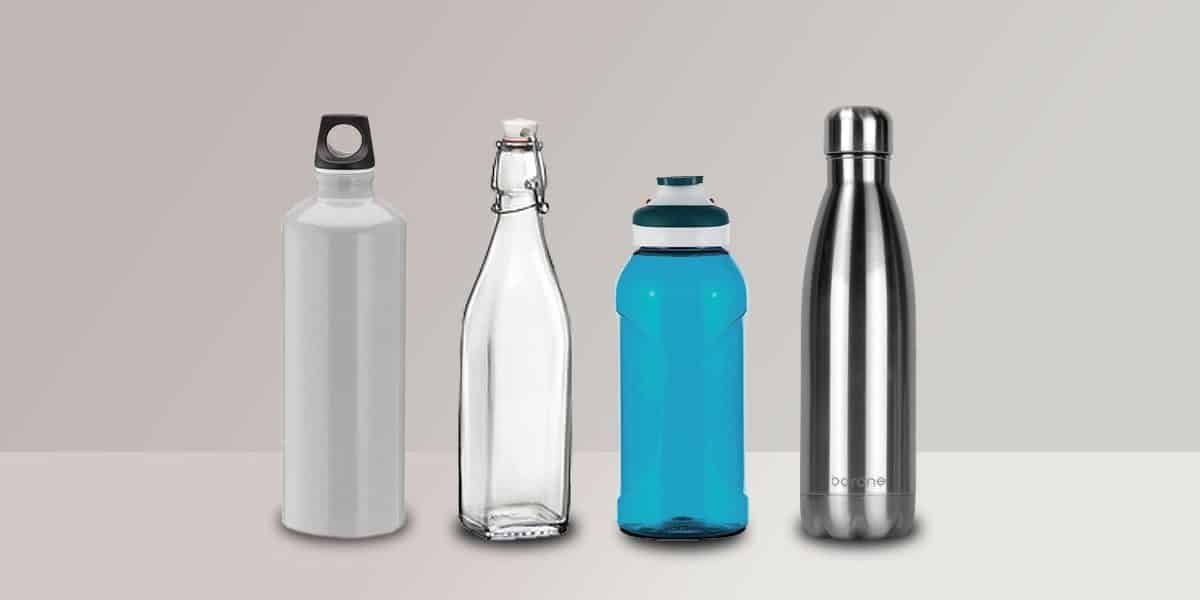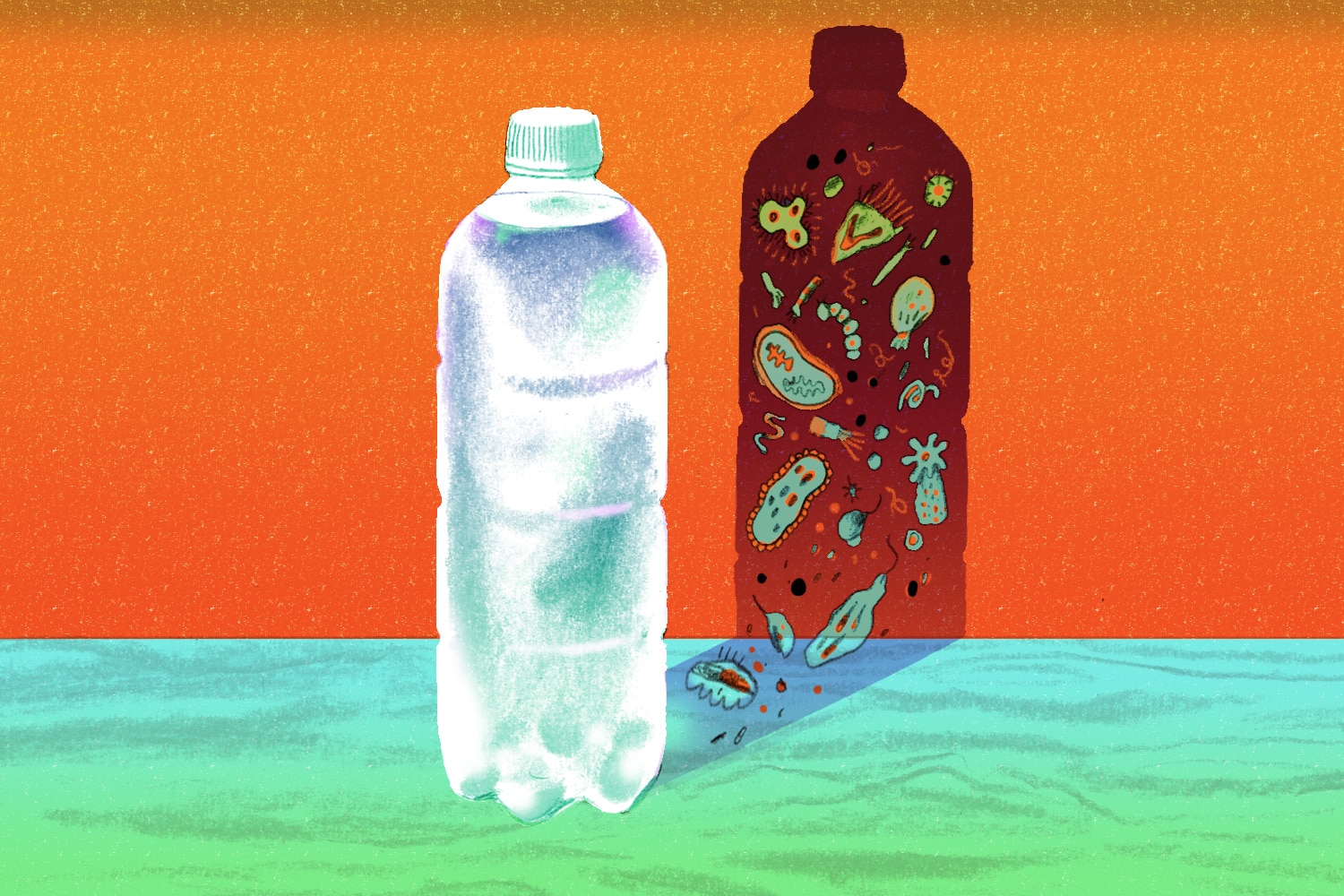Water bottles made of plastic, aluminium or stainless steel – which material is better?
There are dozens of types of water bottles: they usually differ in size and material. There are those made of plastic, aluminum or stainless steel. But which material is most suitable for water bottles?
Plastic water bottles
polycarbonate water bottleMost plastic water bottles are made of polycarbonate. This one is actually transparent and colorless, but can be dyed in any color possible. Older polycarbonate models release decomposition products such as bisphenol A (BPA) when heated, which can be detrimental to health. In the meantime, however, there are BPA-free bottles out there (pay attention to the label or ask). The best-known representatives of this type are Nalgene’s gourds.
There are also water bottles made of polypropylene. It is a softer plastic than polycarbonate and is commonly used for bicycle bottles. However, polypropylene may contain plasticizers that dissolve in water when heated.
Benefits
- Very easy
- Cheap price
- Tasteless and safe for food
- Visible Liquid Level
- Easy to clean thanks to the large drinking opening
- with a 53 mm wide mouth opening suitable for many water filters
- Dishwasher safe up to 50 degrees
Disadvantages
- Not very scratch-resistant
- becomes brittle and brittle over time
- Some plastics (e.g. low-density polyethylene) do not tolerate hot water, so find out before you buy!
Aluminium water bottles
The classic aluminium water bottle comes from the Swiss manufacturer Sigg. The bottles are made from a single piece and are coated inside with a very thin film. This film prevents the aluminium from being attacked and oxidised by fruit acids, for example.
However, the film is not stretchable. So if the bottle falls and dents, there’s a very good chance that the film will burst at this point. This renders the whole bottle unusable and you can throw away the whole beautiful bottle.
Benefits
- Very easy
- unbreakable
- insipid
- Food Safety
Disadvantages
- Not suitable for carbonated beverages
- Difficult to clean due to the generally small drinking opening
- Liquid level not visible
- Expensive
Stainless steel water bottles
Stainless steel is often used in the food industry, for example for brewing kettles or transport containers. The reason for this is the complete neutrality when it comes to foods of any kind.
There are also stainless steel water bottles. It is only in recent years that a few manufacturers have entered the market with models. So the choice is limited.
Stainless steel is certainly unmatched in terms of sturdiness. Even bumps and bumps will hardly affect functionality and it’s quite possible that you can use such a bottle for a few years.
Benefits
- unbreakable
- completely tasteless and odourless
- dishwasher
- Heat-resistant
- with a 53 mm wide mouth opening suitable for many water filters
- Non-toxic
Disadvantages
- Heavier than aluminum and plastic
- Liquid level not visible
- Relatively expensive
What should I choose now?
Basically, everyone has to decide for themselves which bottle is best suited to their personal needs. If you value bright colors and a visible liquid level with measurements, you should definitely get a plastic bottle. For the round-the-world trip, I would recommend a solid stainless steel water bottle.
Personally, I use a GSI Outdoors stainless steel water bottle (pictured above). In addition to absolute neutrality of taste and smell, an indestructible bottle is very important to me. My MSR water filter can be easily mounted on the 53mm opening. I can also fill the bottle with boiling water, so I always have a makeshift hot water bottle on hand.
The gourd has a bulge in the middle with an insulating rubber ring. You can remove it and roll it up instead with wide tape. That’s the theory. In practice, the adhesive of the tape melts as soon as hot water is poured into it. And after that, you can’t use the tape anymore. It would make more sense to wrap a string around it instead. The disadvantage here is that the line can get wet when draining the water, which unnecessarily increases the weight.
So it’s best to leave the insulating ring on the bottle – the flask is an absolutely reliable companion, even without the above frills!






